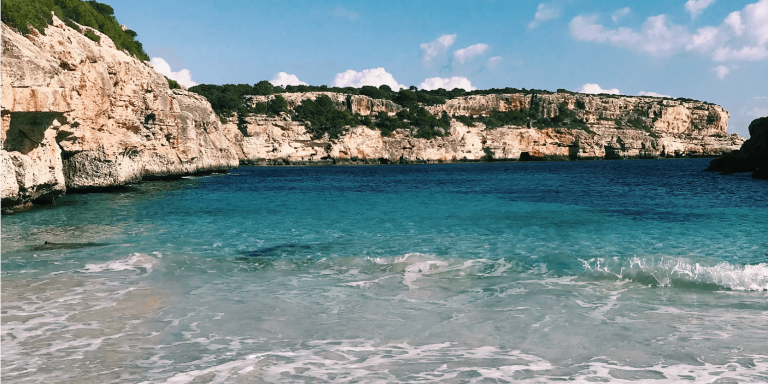
Seawater has a pH of about 8.2, although it can vary between 7.5 and 8.5 depending on local salinity, and is estimated to have declined on average by 0.1 since the industrial era. This downward trend associated with increasing CO2 levels in the atmosphere is a matter of concern because of the possible negative consequences for marine organisms, especially calcifiers (corals, shellfish …). A team of Spanish researchers conducted a study to assess the seasonal variability of pH. Entitled ” pH trends and seasonal cycle in the coastal Balearic Sea reconstructed through machine learning” , it was published in the journal Natureon July 28.
Susana Flecha, Àlex Giménez-Romero, Joaquín Tintoré, Fiz F. Pérez, Iris E. Hendriks, Manuel A. Matías, Eva Alou-Font are the authors of this study, which aims to study the variability of the PH of the Balearic coastal area through deep learning.
Atmospheric carbon dioxide emissions have increased exponentially since the beginning of the industrial revolution, mainly due to fossil fuel use, industry and land use change. Previous studies have estimated that while about 46% of CO2 remains in the atmosphere, the remaining 54% is found in the biosphere and oceans. When CO2 dissolves in seawater, chemical reactions occur, resulting in a decrease in the pH of the seawater.
Coastal areas are important land-ocean transition zones with complex interactions between biological, physical and chemical processes. The researchers assessed pH variability at two sites in the coastal zone of the Balearic Sea, Palma and Cabrera. They used environmental datasets of temperature, salinity, and dissolved oxygen obtained from autonomous sensors from 2018 to 2021 and trained recurrent neural networks to predict pH and fill in data gaps. Longer environmental time series (2012-2021) were used to obtain the pH trend using reconstructed data. The best predictions show a rate of change of -0.0020±0.00054 pH units per year, which is consistent with other observations of pH rates in coastal areas. Their methodology can provide pH trends even when not much pH data is available, only other variables need to be accessible.
This work highlighted the capabilities of deep learning techniques, in particular the BD-LSTM (BiDireccional Long Short-Term Memory) architecture, to reconstruct relevant pH data to assess seasonal pH variability and to elucidate the consequences of climate change, such as the AO effect, in a coastal area of the Balearic Sea, which can be extended to the coastal areas of the western Mediterranean basin. Nevertheless, future research is needed to evaluate and confirm these regional trends, so it is important to maintain the time series monitoring networks.
Article sources:
“pH trends and seasonal cycle in the coastal Balearic Sea reconstructed through machine learning” https://doi.org/10.1038/s41598-022-17253-5
Nature, 28/07/2022
Authors:
Susana Flecha, Instituto de Ciencias Marinas de Andalucía (ICMAN-CSIC),Instituto Mediterráneo de Estudios Avanzados (IMEDEA-UIB-CSIC),
Àlex Giménez-Romero, Instituto de Física Interdisciplinar y Sistemas Complejos, (IFISC-UIB-CSIC),
Joaquín Tintoré, Instituto Mediterráneo de Estudios Avanzados (IMEDEA-UIB-CSIC), Balearic Islands Coastal Observing and Forecasting System (SOCIB,
Eva Alou-Font, Balearic Islands Coastal Observing and Forecasting System (SOCIB),
Iris E. Hendriks, Instituto Mediterráneo de Estudios Avanzados (IMEDEA-UIB-CSIC),
Manuel A. Matías, Instituto de Física Interdisciplinar y Sistemas Complejos, (IFISC-UIB-CSIC),
Fiz F. Perez, Instituto de Investigaciones Marinas (IIM-CSIC).
Translated from Etudier la variabilité du PH en zone côtière grâce au deep learning









